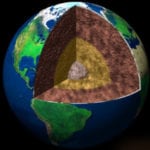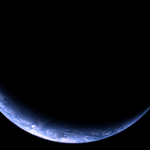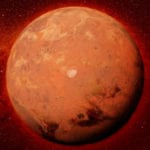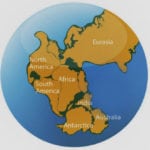 Creepy
Creepy  Creepy
Creepy  Technology
Technology 10 Scientific Breakthroughs of 2025 That’ll Change Everything
 Our World
Our World 10 Ways Icelandic Culture Makes Other Countries Look Boring
 Misconceptions
Misconceptions 10 Common Misconceptions About the Victorian Era
 Mysteries
Mysteries 10 Strange Unexplained Mysteries of 2025
 Miscellaneous
Miscellaneous 10 of History’s Most Bell-Ringing Finishing Moves
 History
History 10 Great Escapes That Ended Right Back in Captivity
 Weird Stuff
Weird Stuff 10 Fascinating Things You Might Not Know About Spiders
 Food
Food 10 Everyday Foods You Didn’t Know Were Invented by the U.S. Military
 History
History 10 Odd Things Colonial Americans Kept at Home
 Creepy
Creepy 10 More Representations of Death from Myth, Legend, and Folktale
 Technology
Technology 10 Scientific Breakthroughs of 2025 That’ll Change Everything
 Our World
Our World 10 Ways Icelandic Culture Makes Other Countries Look Boring
Who's Behind Listverse?

Jamie Frater
Head Editor
Jamie founded Listverse due to an insatiable desire to share fascinating, obscure, and bizarre facts. He has been a guest speaker on numerous national radio and television stations and is a five time published author.
More About Us Misconceptions
Misconceptions 10 Common Misconceptions About the Victorian Era
 Mysteries
Mysteries 10 Strange Unexplained Mysteries of 2025
 Miscellaneous
Miscellaneous 10 of History’s Most Bell-Ringing Finishing Moves
 History
History 10 Great Escapes That Ended Right Back in Captivity
 Weird Stuff
Weird Stuff 10 Fascinating Things You Might Not Know About Spiders
 Food
Food 10 Everyday Foods You Didn’t Know Were Invented by the U.S. Military
 History
History 10 Odd Things Colonial Americans Kept at Home
10 Mysterious Features Of The Earth That We May Never Understand
When we think about all the strange features on other worlds that we can’t explain, it’s tempting to think that we could figure everything out if we could just get there and examine them up close. Yet there are plenty of pieces of Earth’s own geological history we can touch but still don’t understand.
10Mount Baldy Sinkholes

At 37 meters (123 ft), Mount Baldy is the tallest sand dune on the southern edge of Lake Michigan. Indiana advertises the tourist attraction as “living” because it moves a meter or two every year. The dune began to move when visitors wore away the grass holding it together. That’s no mystery; it’s caused by the wind. It’s the dune’s ability to swallow children that puzzles scientists.
In July 2013, six-year-old Nathan Woessner was buried when a 3-meter (11 ft) hole suddenly formed beneath him. It took three hours to dig him out, thankfully alive. The next month, a second hole appeared. Deep air pockets aren’t supposed to be able to form in sand dunes, because the sand should immediately fill any gaps.
“We’re seeing what appears to be a new geological phenomenon,” said geologist Erin Argyilan, who is leading an investigation. She was working nearby the day Nathan was swallowed and is emotionally invested in finding the answer.
The dune may cover trees, which rot away to create the holes. The dune was once mined to use the sand in glass making, so the phenomenon may be caused by humans. In the meantime, the dune is very much closed to the public.
Experience more of the breathtaking beauty of the world with BBC’s hit miniseries Planet Earth: The Complete BBC Series at Amazon.com!
9Eye Of The Sahara

The Richat Structure, or the Eye of the Sahara, is a 50-kilometer-wide (30 mile) circular feature in the world’s hottest desert. It’s made of concentric circles in various shades of blue and is best seen from space. For a long time, it was thought to be an impact crater, but recent research suggests that’s almost certainly not the case. The heat and pressure of a meteor strike leaves behind telltale compounds, including a form of silicon dioxide called coesite. The Eye has none.
Some people have noted a resemblance to Plato’s descriptions of Atlantis and suggest the mythical city may have had its home there. Even if Atlanteans had lived there, evidence suggests that the structure formed nearly 100 million years ago, so they didn’t build it. The extent of human habitation is a makeshift camp for adventurous tourists.
Another possibility is that the Richat Structure is the top of a volcano, but it’s not the bulged dome shape we’d expect to find. The current leading theory is that the feature was eroded into place over a long period of time. That covers what’s on the ground, but it leaves the circular shape an utter mystery.
8Desert Varnish
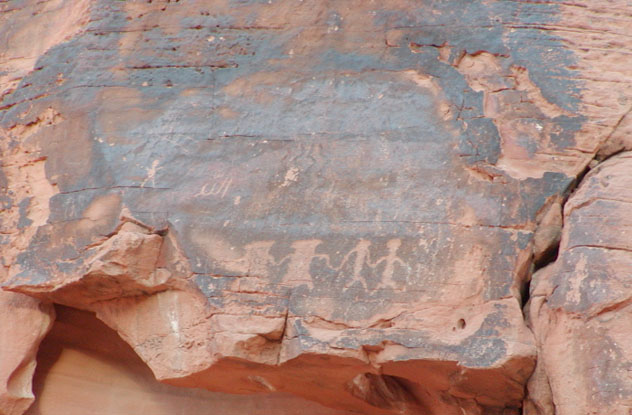
Desert rocks are often coated with a thin substance that ranges in color from light orange to black. Ancient people the world over made petroglyphs by scraping the varnish away. Yet despite its widespread existence across the globe, desert varnish’s formation remains unexplained.
The varnish is made mostly of clay. Around a third consists of iron and manganese, which provide both the color and the mystery. Manganese in particular may be 50 times more concentrated in varnish than in the surrounding landscape. Laboratory experiments have shown that microorganisms can concentrate these elements. Yet bacteria would produce the substance at a faster rate than the varnish forms, which is typically around a human hair’s width every 1,000 years.
Some researchers believe the substance leaches from the rock or is caused by dust falling from the sky because there is too much silica for a biological explanation. Others believe that the iron and manganese demand life. A recent suggestion to reconcile the problems is that the varnish may be produced by microorganisms with a completely alien type of biochemistry. This shadow biosphere could have been from a different origin of life to the common ancestor of every species we currently know, possibly one based on silicon rather than carbon.
7Uturuncu
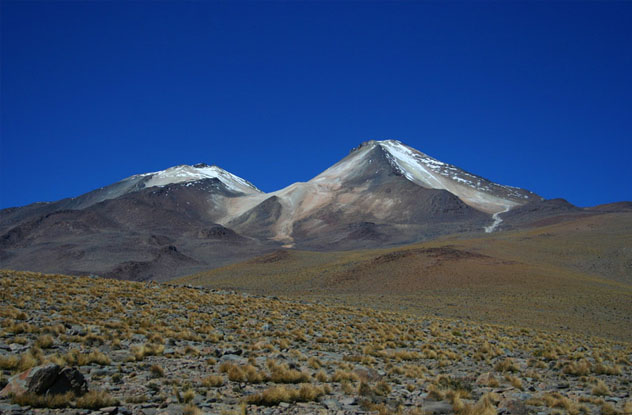
Uturuncu, a 6,000-meter (20,000 ft) volcano in southwest Bolivia, last erupted 300,000 years ago. Satellite observations from the last 20 years have found the volcano’s underground chamber filling up 10 times faster than similar volcanic systems. It’s growing by a cubic meter (35 cubic feet) of magma per second. The result is that the land around the volcano in an area 70 kilometers (43 miles) across is ballooning upward by a couple of centimeters every year.
The first unanswered question is how long the inflation has been going on. Geomorphologists have studied nearby terrain and it looks to be a relatively recent phenomenon, but there’s a lot of detective work left.
The other mystery is what Uturuncu will do in the future. Oregon State University’s Shan de Silva, who’s been studying the volcano since 2006, thinks it could be a potential supervolcano. Other geologists see no evidence for that claim. Either way, 300,000 years is about the average wait between eruptions in southwest Bolivia, and Uturuncu looks like it’s getting ready to do something.
6The Permian Extinction

The most intense extinction in Earth’s history was the End-Permian mass extinction. An estimated 93–97 percent of species on the planet were wiped out. The cause of the extinction is one of the biggest debates in paleontology.
Meteorites are an obvious suspect. A possible impact crater in Antarctica has been suggested, but in general, the evidence for a collision is weak.
Volcanoes are a popular suggestion, the most likely candidates being the Siberian Traps which formed around that time. Scientists studying the extinction boundary in Canada found a layer of coal ash. They suggest volcanism set alight vast swathes of coal, causing a runaway greenhouse effect. Even without the coal fire, the volcanoes could have spewed sulfate into the air to block out the sun and create torrents of acid rain.
Volcanism could have played a more subtle role. A team of MIT researchers have pointed the blame at a microbe named Methanosarcina. These single-celled archaea produce methane and thrive on nickel and carbon dioxide—both of which were abundant due to volcanoes. Methane is 30 times more potent than carbon dioxide as a greenhouse gas and could have caused devastating warming of the planet.
5Lake Hillier
Lake Hillier is not the only pink lake in the world, but it’s definitely the least understood. It was discovered in 1802 in a pristine area of Australia’s wilderness. To protect wildlife that live around the lake, it’s currently only possible to view it from the air. This isolation has left it unstudied.
The “bubblegum pink” lake is safe to swim in, though it’s extremely salty. There are three likely causes for the color, based on what we know of other pink lakes around the world.
Pink Lake in Western Australia is actually less pink (and in hillier terrain) than Lake Hillier. Pink Lake’s color is caused by a combination of shrimp and microorganisms known as halobacteria (which aren’t really a type of bacteria). There may be actual bacteria, or Achaea such as the misnamed halobacteria, living in Hillier’s salt crusts.
Lake Retba in Senegal is a similar color and shares a high salt content, but its pinkness is caused by algae.
Finally, Hillier’s color may not require life at all but could be due to chemical reactions. The salt in the lake could react with dissolved baking soda, or there could be some other unique composition of rock surrounding the lake.
One option that’s definitely ruled out is an optical illusion, as the water stays pink even when placed in a bottle.
If you think these places are weird, check out the animals that live in them! See for yourself in Weird Animals: 50 Weirdest Animals around the World! at Amazon.com!
4How Hawaii Formed
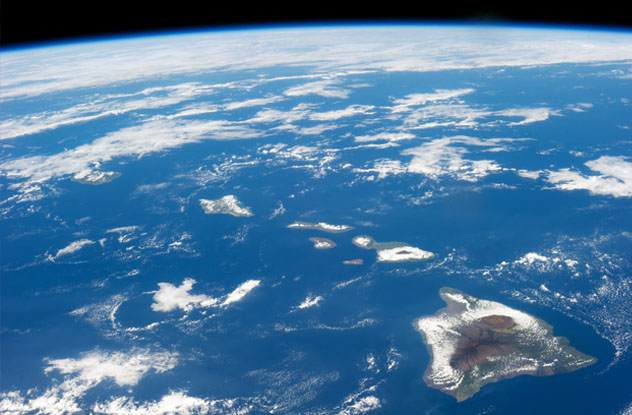
The Hawaiian Island chain is one of many believed to have been formed by a “hot spot.” These are regions where magma rises to the surface and stays in place for tens of millions of years as continental plates drift over them. In doing so, they produce rows of volcanic islands, with an active volcano located on the youngest of them. These make up the 5 percent of volcanoes located far from plate boundaries.
The cause of these hot spots is one of geology’s biggest mysteries. The leading theory is a plume of hot magma rising from as far down as the border between the Earth’s mantle and inner core, 3,000 kilometers (1,800 mi) deep. These are known as mantle plumes, but there’s no consensus as to whether they actually exist. Lab experiments and theoretical models suggest they are at least possible
In 2011, an MIT team published a study suggesting a thermal anomaly 725 kilometers (450 mi) west of Hawaii was a more likely candidate and may have been only 800 kilometers (500 mi) below the surface. This trapped pool of molten materials then traveled across the top of the mantle before rising through the crust.
3The Grand Canyon’s Age
The Grand Canyon is one of the most famous geological formations on Earth. It’s also one of the most studied. Despite that, there is no consensus on how old the canyon is, and the quibble’s not over just a few years. Scientists on one side are pushing an age of around six million years. On the other side, they’re saying 70 million.
The two camps disagree about whether the canyon was carved by the Colorado River or whether it was already there and the Colorado simply routed its way through. Authors continue to publish papers supporting each hypothesis without making much progress.
2Low-Angled Normal Faults
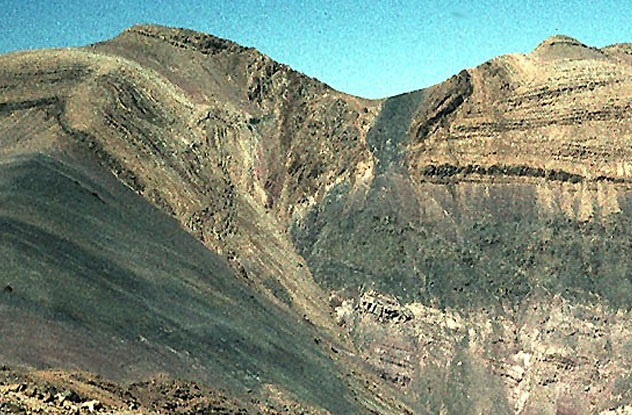
A fault is a crack in the Earth’s surface, and the sides of the fault can move against each other in any direction. They’re rarely vertical, and the side that rests on top is called a hanging wall. The lower half is the footwell. A slip-dip fault is one where the hanging wall slides up or down the footwell, and these faults are normally very steep.
Slip-dip faults whose hanging wall slides downward are known as normal faults. Normal faults that have a shallow slope less than 30 degrees from the horizontal are low-angle normal faults, or LANFs. And LANFs are a problem because they shouldn’t exist. Our models say that if they form they should seize up and turn into steeper faults. They’ve been called “the greatest paradox of tectonics.”
LANFs should lock because the friction between the two sides should stop them moving. Normally, when a fault locks, it strains until it violently overcomes the friction in an earthquake. Yet LANFs have never been confirmed to cause earthquakes, and it looks likely they might not do so. That makes them the only known class of faults to move solely by gradual creep.
This all means there are significant holes in some importantly geological models. Alternatively, our lab measurements of fracture and friction simply don’t translate to the real world the way we think they do.
1Messinian Salinity Crisis
Around six million years ago, the Mediterranean Sea turned into a desert. It stayed that way for around 630,000 years, an era now known as the Messinian Salinity Crisis. Scientists agree that it was almost certainly because the sea became blocked from the Atlantic. The mystery is why, and there’s no shortage of theories.
One idea is that an expansion of the polar ice caps lowered sea levels and created a shallow piece of land to block the ocean’s access. Alternatively, tectonic collisions may have raised the seabed near Gibraltar, the way they raised the nearby Alps. These movements could have instead squeezed together Spain and Morocco to close the strait.
A more unusual theory put forward by geologists at Royal Holloway University of London is that the floor of the Atlantic ocean peeled up. The resulting flap, still attached to the ocean floor at its western end, let out lighter rocks from underneath. These floated into place to create a giant natural dam across the Gibraltar strait, until the sea flooded again suddenly half a million years later.
